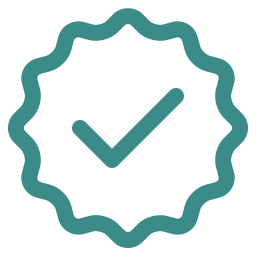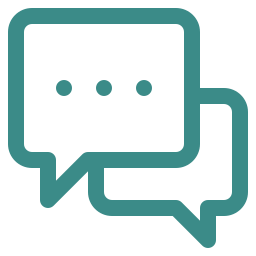Balancing Bumps: Pilates Equipment Adaptations for Every Pregnancy Stage
Are you expecting a little one? Congratulations!
As you embark on this beautiful journey of pregnancy, it's important to stay active and take care of your body.
That's where Pilates comes in.
In this article, we will guide you through the different Pilates equipment for sale modifications for each trimester, ensuring a safe and effective workout.
From the first trimester to the third, we've got you covered. So grab your mat, get ready to modify, and enjoy the benefits of Pilates throughout your pregnancy.
Do you want to stay focused when performing Pilates? Check out our blog on how to harness the power of breath for enhanced focus and energy.
First Trimester Equipment Modifications
During your first trimester, you'll need to make modifications to the equipment you use for your Pilates workouts.
It's important to prioritize safety and comfort as your body goes through significant changes during pregnancy.
When practicing Pilates in the first trimester, you may experience symptoms such as fatigue, morning sickness, and increased urination.
These modifications will help you maintain a safe and effective workout while supporting your growing baby.
Firstly, when using the Pilates Reformer machine, it's advisable to lower the foot bar.
This will prevent any unnecessary pressure on your abdomen.
Additionally, use lighter springs to reduce strain on your muscles and joints.
As your body adjusts to the changes, you may need to modify exercises that involve lying on your back.
Instead, try performing them in a reclined position or using props like pillows to elevate your upper body.
When using the Pilates ball, opt for a larger size to provide better support and stability.
This will help you maintain balance during exercises that require core engagement.
Remember to listen to your body and avoid any movements that cause discomfort or strain.
For exercises that involve the Pilates ring, you may need to use a softer resistance band to accommodate your changing body.
This will allow you to engage your muscles without putting excessive pressure on your abdominal area.
Lastly, consider using a yoga mat or a cushioned surface to provide extra support for your joints and prevent any unnecessary strain.
Second Trimester Equipment Modifications
Now that you're entering your second trimester, it's important to make additional equipment modifications to ensure a safe and comfortable Pilates workout on your AeroPilates Reformer.
As your body continues to change during pregnancy, it's essential to adapt your Pilates practice to accommodate these changes.
During the second trimester, your belly will start to grow, and you may begin to feel more pressure on your pelvic floor and lower back.
By making the appropriate equipment modifications, you can continue to enjoy the benefits of Pilates while pregnant.
One of the key modifications to consider during the second trimester is using a pregnancy wedge or cushion for support.
Placing a wedge under your belly can help alleviate any discomfort you may feel during exercises that require lying on your back.
It helps to relieve pressure on your vena cava, a major blood vessel that can be compressed by the weight of your growing uterus when lying flat on your back.
By propping up your upper body with pillows or using an inclined bench, you can also minimize any potential dizziness or shortness of breath.
Another important equipment modification to consider during the second trimester is using a stability ball.
This versatile piece of equipment can provide support and help maintain balance as your center of gravity shifts.
You can use the stability ball for exercises such as pelvic tilts, squats, and upper-body stretches.
It can also be used as a chair during Pilates workouts, which can help relieve pressure on your lower back and improve posture.
As always, it's crucial to listen to your body and consult with your healthcare provider before continuing or starting any exercise program during pregnancy.
By making these equipment modifications during the second trimester, you can ensure a safe and comfortable Pilates workout that benefits both you and your baby.
Stay strong and confident in your pregnancy Pilates journey!
Third Trimester Equipment Modifications
Make sure to use a larger exercise ball during your third trimester to accommodate your growing belly and maintain stability during Pilates workouts.
As your baby bump continues to grow, it's important to make adjustments to your Pilates equipment like the BASI Reformer to ensure a safe and comfortable workout.
In the third trimester, certain modifications are necessary to accommodate your changing body and provide support for both you and your baby.
When it comes to using the reformer during your third trimester, it's recommended to avoid lying flat on your back for prolonged periods of time.
Instead, prop yourself up with pillows or use an incline board to elevate your upper body slightly.
This will help alleviate any potential pressure on your vena cava and ensure proper blood flow to you and your baby.
Additionally, consider using a wider foot bar on a Reformer for sale to accommodate your growing belly.
This will provide more space for your belly and allow you to maintain proper alignment during exercises.
It's also important to listen to your body and modify or skip any exercises that feel uncomfortable or put too much strain on your abdominal muscles.
Incorporating a stability ball into your Pilates routine during the third trimester can be beneficial for maintaining balance and stability.
The larger size of the ball will provide more support for your belly and help you maintain proper alignment during exercises.
You can use the stability ball for exercises such as pelvic tilts, seated exercises, and gentle stretching.
Remember to always listen to your body and consult with your healthcare provider before starting or continuing any exercise routine during pregnancy.
They can provide personalized guidance and ensure that you're safely adapting your Pilates workouts to your changing body.
With these modifications, you can continue to enjoy the benefits of Pilates throughout your pregnancy.
Mat Work Modifications for Pregnancy
Try incorporating modifications into your mat work routine to accommodate your changing body during pregnancy.
Prenatal Pilates is a great way to stay active and maintain your strength and flexibility during this special time.
However, it's important to make some adjustments to ensure the safety and comfort of both you and your baby.
Here are some mat work modifications for pregnancy that you can try.
Firstly, it's important to avoid lying flat on your back for extended periods of time, especially after the first trimester.
This position can put pressure on the vena cava, the large vein that carries blood back to the heart, and may cause dizziness or shortness of breath.
Instead, try propping yourself up with pillows or a bolster to elevate your upper body slightly.
Secondly, as your belly grows, you may find it more comfortable to widen your stance during exercises.
This can help to accommodate your growing belly and maintain your balance.
For exercises like the hundred or the roll-up, you can also try performing them in a seated or semi-reclined position to take the pressure off your lower back.
Additionally, be mindful of your core engagement during mat work.
While it's important to maintain a strong core during pregnancy, avoid any exercises that involve deep abdominal twists or excessive strain on the abdomen.
Focus on gentle core exercises that promote stability and support, such as pelvic tilts or cat-cow stretches.
Remember to listen to your body and modify any exercises that feel uncomfortable or cause pain.
Prenatal Pilates is all about adapting and finding what works best for you and your changing body.
Stay connected with your breath, take breaks when needed, and enjoy the benefits of Pilates during your pregnancy journey.
Reformer Modifications for Pregnancy
You should always consult with a qualified prenatal Pilates instructor before using the Private Pilates Reformer during pregnancy, but if you're cleared to do so, there are some modifications you can make to ensure a safe and effective workout.
Reformers can be a great tool for maintaining strength and flexibility during pregnancy.
Here are some modifications to consider when using the Pilates reformer for pregnancy:
-
Use lighter resistance
During pregnancy, your body goes through many changes, and it's important to listen to your body's needs.
Using lighter resistance on the reformer can help you avoid putting excessive strain on your muscles and joints.
-
Modify foot positions
As your pregnancy progresses, your center of gravity shifts and your balance may be affected.
Adjusting your foot positions on the reformer can help you maintain stability and prevent any unnecessary strain.
-
Avoid exercises that involve lying flat on your back
Lying flat on your back for an extended period of time can put pressure on the vena cava, a major vein that carries blood back to your heart.
Instead, opt for exercises that allow you to lie on your side or use incline positions.
-
Incorporate pelvic floor exercises
Pregnancy can weaken the pelvic floor muscles, so it's important to strengthen them.
The reformer can be a useful tool for pelvic floor exercises, such as pelvic tilts and bridges.
-
Listen to your body
Every pregnancy is unique, and what works for one person may not work for another.
Pay attention to how your body feels during each exercise and modify or skip any movements that cause discomfort or pain.
Chair Modifications for Pregnancy
To safely adapt Pilates exercises for pregnancy, it's important to be mindful of your body's changing needs and make modifications to the chair, using props and adjusting positions when necessary.
Pilates can be a great way to stay active and maintain strength and flexibility during pregnancy, but it's crucial to make sure it's done safely and with the guidance of a qualified instructor.
When it comes to using the chair during pregnancy, there are a few modifications that can help accommodate your growing belly and changing body.
First and foremost, it's important to listen to your body and only do what feels comfortable.
In the first trimester, you can generally continue with your regular Pilates routine, but it's important to pay attention to any changes in your body and adjust accordingly.
You may find that certain positions or exercises become uncomfortable or difficult to perform, and that's okay.
It's all about finding what works for you and your baby.
During the first trimester, you can continue to use a Pilates chair for sale for exercises such as seated leg exercises, arm exercises, and seated twists.
However, as your pregnancy progresses, you may need to modify your positions to accommodate your growing belly.
For example, you can use props such as a pillow or towel to support your lower back during seated exercises, and you may need to widen your stance to allow room for your belly during exercises that involve bending or twisting.
Cadillac Modifications for Pregnancy
As your pregnancy progresses, it's important to make modifications to your Cadillac Pilates exercises in order to accommodate your changing body and ensure a safe and comfortable workout.
The Cadillac like the Private Pilates Cadillac Reformer is a versatile piece of equipment that can be adjusted to meet your needs during pregnancy.
Here are some modifications to consider:
-
Use a wider stance:
As your belly grows, it may become uncomfortable to keep your legs together. Instead, try widening your stance to give your belly more space.
-
Adjust the springs
The springs on the Cadillac can provide resistance during exercises.
As your pregnancy advances, you may need to reduce the tension on the springs to make the exercises more manageable.
-
Use pillows for support
Place a pillow or cushion behind your back to provide extra support during exercises that require lying on your back.
This will help alleviate any discomfort or pressure on your lower back.
-
Modify leg exercises
During the first trimester, you can continue with leg exercises on the Cadillac as long as you feel comfortable.
However, as your pregnancy progresses, it may be necessary to modify these exercises by using a lighter spring tension or reducing the range of motion.
-
Listen to your body
Pregnancy is a unique experience, and every woman's body is different. I
t's important to listen to your body and make modifications as needed.
If something doesn't feel right or causes discomfort, stop the exercise and consult with your healthcare provider.
Frequently Asked Questions
Can I Continue Doing Pilates in the First Trimester Without Any Equipment Modifications?
You can definitely continue doing Pilates in the first trimester without any equipment modifications.
It's important to listen to your body and make sure you're not pushing yourself too hard when exercising on your Merrithew At Home SPX Reformer Bundle
As your pregnancy progresses, you may need to make some adjustments to accommodate your growing belly and changing center of gravity.
But for now, enjoy your Pilates practice and focus on maintaining good form and alignment.
Remember to consult with your healthcare provider for personalized advice.
Are There Any Specific Modifications for Pilates on the Mat During the Second Trimester?
During the second trimester of your pregnancy, there are indeed specific modifications you should make when doing Pilates on the mat.
These modifications are important to ensure your safety and the well-being of your baby.
By making adjustments to your movements and positions, you can continue to enjoy the benefits of Pilates while keeping yourself and your baby protected.
These modifications will help you maintain strength, flexibility, and balance as your body goes through remarkable changes.
Let's explore these modifications together!
Can I Still Use the Reformer Machine During the Third Trimester of My Pregnancy?
Yes, you can continue using the reformer machine during the third trimester of your pregnancy.
However, it's important to make some modifications to ensure your safety and comfort.
You may need to adjust the footbar height, use additional support for your abdomen, and avoid exercises that put excessive pressure on your belly.
It's always best to consult with a qualified prenatal Pilates instructor who can guide you through the appropriate modifications for each trimester.
What Are Some Modifications for Doing Pilates on the Wunda Chair While Pregnant?
During pregnancy, it's important to modify your Pilates routine on the Wunda chair to ensure the safety of you and your baby.
Some modifications you can make include using a wider stance to accommodate your growing belly and avoiding exercises that put pressure on your abdomen.
It's also a good idea to use additional support, like pillows or cushions, to help maintain proper alignment.
Remember to always listen to your body and consult with your healthcare provider before starting any exercise program.
Are There Any Recommended Modifications for Using the Cadillac Machine During Pregnancy?
During pregnancy, it's important to make modifications to your Pilates routine to ensure the safety and comfort of you and your baby.
When using the Cadillac machine, there are recommended modifications to consider.
For example, you may need to adjust the springs and the height of the bar to accommodate your changing body.
It's also important to listen to your body and not push yourself too hard.
Conclusion
Pregnancy brings profound physical changes, but that doesn't mean you have to give up your Pilates practice.
With the right modifications, you can continue to strengthen and tone your body throughout each trimester.
From mat work to reformer, chair to Cadillac, there are equipment modifications tailored to meet the unique needs of your changing body.
So, don't hesitate to seek out knowledgeable instructors and supportive communities to guide you on your Pilates journey during pregnancy.




